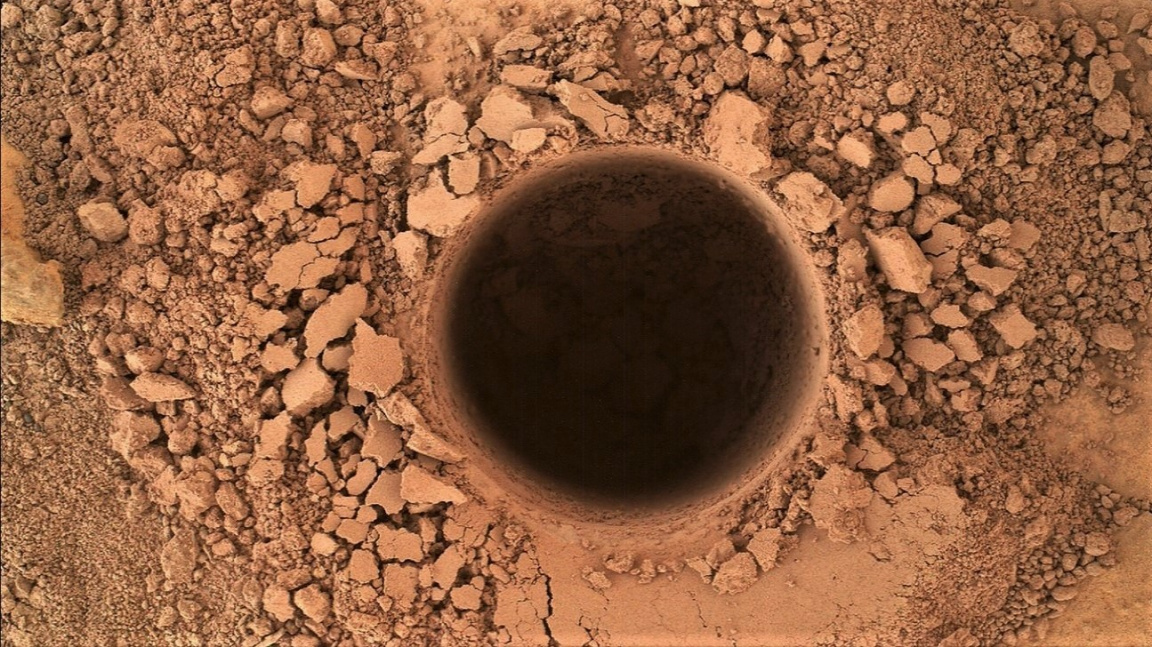We must probably look for life on Mars deeper below the surface than previously thought.
As the robotic rovers Curiosity and Perseverance comb the red planet’s surface for traces of once-microscopic life, new findings suggest we’ll have to dig deeper, much deeper, to find them.
Any amino acids – the basic building blocks of proteins from when Mars was habitable—likely to be buried at least two meters below the planet’s surface.
The reason is the weak magnetic field of Mars. The surface of the planet is thus exposed to a higher dose of cosmic radiation than the Earth.
Energy radiation from solar flares and energetic events such as supernovae penetrates rock, ionizing and destroying organic molecules (including organic acids – amino acids) that they come across. And the poor atmosphere or composition of the Martian soil contributes to the work of destruction.
They will take the place of ‘gardeners’ ‚wreckers’
A scientific team led by astrophysicist Alexander Pavlov of NASA’s Goddard Space Flight Center found this out in an experiment they describe in a study published in the journal Astrobiology. In it, scientists inserted amino acids into an analogue of Martian rock (Earth rock with a composition similar to that of Martian rock) and exposed them to various doses of ionizing radiation in an analogue of the Martian atmosphere.
It turned out that not only radiation, but also the very composition of the soil (most of the surface of Mars consists of silicon dioxide and salts) and the thin atmosphere accelerate the breakdown of amino acids.
“Our results suggest that amino acids are being destroyed by cosmic rays in the surface rocks and regolith of Mars much faster than previously thought,” cites the magazine Science Alert Alexander Pavlov.
Astrophysicist Pavlov points out that NASA’s Mars rovers drill to a depth of four to seven centimeters. At these depths the amino acids would be destroyed in 20 million years. At the same time, older studies assumed that they would have a lifespan up to several times longer.
It follows that if we want to find life on Mars, it is useless to dig into the ground like gardeners removing weeds and look for it just below the surface.
The search for life will drag on
Although no probe has yet returned from Mars, we have some pieces from the planet on Earth. They came to us in the form of meteorites that were shot from Mars long ago by other meteorites. Scientists from Goddard have already discovered amino acid chains inside one.
“We have identified several amino acids in the Antarctic Martian meteorite RBT 04262 that we believe are of Martian origin,” he said Science Alert astrobiologist Danny Glavin of the Goddard Space Flight Center. “Since Martian meteorites are typically ejected from a depth of one meter or more by the impact of another asteroid, it is possible that the amino acids in the meteorite were protected from cosmic radiation by their original deeper location.”
It is not clear whether the amino acids in the mentioned meteorite were formed without the influence of life or thanks to it. But it is obvious that other Mars probes or astronauts should focus on exploring greater depths on Mars.
However, drilling meters deep is particularly difficult for probes. It can therefore be assumed that we will have to wait a little longer to confirm or deny the existence of life on Mars.
–
Resources:
Science Alert, Astrobiology
–

